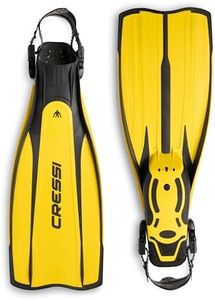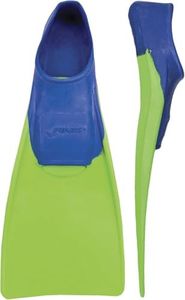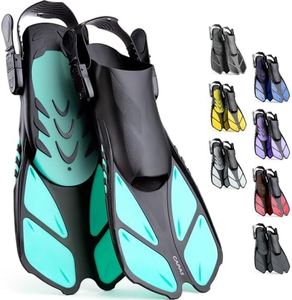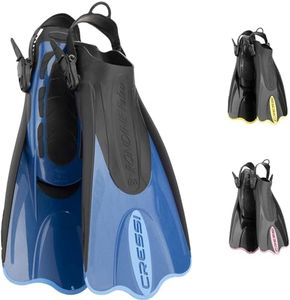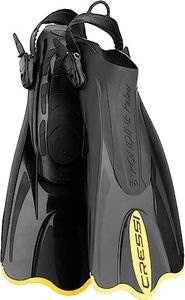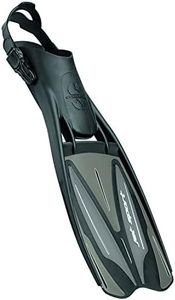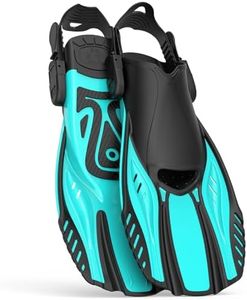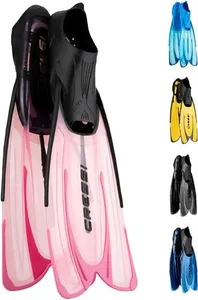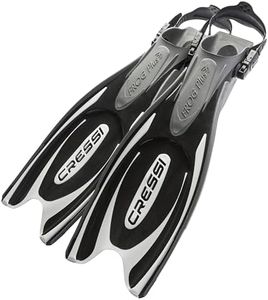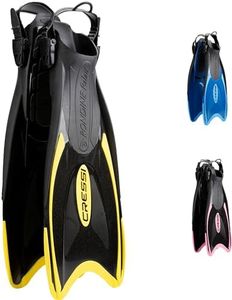We Use CookiesWe use cookies to enhance the security, performance,
functionality and for analytical and promotional activities. By continuing to browse this site you
are agreeing to our privacy policy
10 Best Scuba Fins
From leading brands and best sellers available on the web.Buying Guide for the Best Scuba Fins
Choosing the right scuba fins can make a big difference in your underwater experience. The key is to find fins that are comfortable, efficient, and suited to your style of diving. Think about where and how often you will be diving, your strength and experience, and the kinds of conditions you'll face. Fins help you move easily underwater, reduce fatigue, and allow you to focus more on enjoying the aquatic scenery instead of struggling against the current. The best fins are the ones that fit you well and match your needs and preferences.Fin Type (Open Heel vs. Full Foot)The type of fin refers to whether it has an open heel design, which you use with separate boots, or a full foot design, which you slip onto your bare foot. Open heel fins are popular for colder or rougher waters where extra protection and warmth from dive boots is needed, and they offer better adjustability for different foot sizes. Full foot fins are usually lighter and are great if you dive in warm water and want something easy to put on and take off. Your choice depends on where you'll be diving and your comfort with wearing boots or not.
Blade DesignBlade design affects how you move through the water. The main styles are paddle, split, and channel blades. Paddle blades are simple and powerful, great for strong kicks but can be tiring. Split blades have a central split, making them easier to kick with, using less effort but sometimes offering less power for strong currents. Channel blades have grooves that direct water flow for added efficiency. If you’re new to scuba diving or prefer an easy-going dive, try split or channel blades. If you need more thrust and control, paddle blades are a solid choice.
Length and StiffnessFins come in various lengths and levels of stiffness. Longer and stiffer fins can deliver more power, which is useful in strong currents or for experienced divers with strong leg muscles. However, they can be tiring and harder to manage for beginners or smaller divers. Shorter or more flexible fins are easier to kick and control, making them more comfortable for new divers and leisurely swims, but they might not provide enough force when you need to move quickly or against a current. Base this decision on your fitness level, diving environment, and how aggressive you plan to be with your swimming.
Comfort and FitHow a fin fits your foot is extremely important. A poor fit can cause blisters or slipping, making your dive uncomfortable. Try fins on with the booties you’ll use (if any) and test for a snug but not painful fit. The fin should not pinch or wobble on your foot. Walk around a bit and flex your feet—pay attention to any pressure points. Comfort should always be a priority, since even the best performing fins will detract from your dive if they cause discomfort.
Weight and Travel-FriendlinessThe weight of your fins can matter a lot, especially if you travel frequently to dive locations. Heavier fins might add power and stability but can be a hassle to pack or carry. Lighter fins are easier to travel with but may not provide as much performance in demanding underwater conditions. Consider where you plan to dive most often (local vs. travel), and whether you prioritize lightweight gear or performance.
